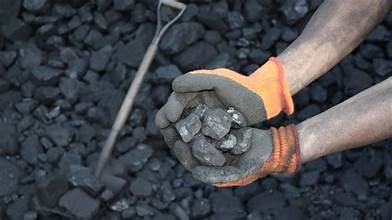Introduction: The Importance of Coal in India’s Energy SectorCoal remains a cornerstone of India’s energy landscape, playing a pivotal role in powering the nation’s industrial growth and electricity generation. Despite global efforts to transition to renewable energy, coal continues to be the dominant energy source in India, largely due to its cost-effectiveness and vast reserves.
Introduction: The Importance of Coal in India’s Energy Sector
Coal remains a cornerstone of India’s energy landscape, playing a pivotal role in powering the nation’s industrial growth and electricity generation. Despite global efforts to transition to renewable energy, coal continues to be the dominant energy source in India, largely due to its cost-effectiveness and vast reserves. India’s coal reserves and production are essential to sustaining the country’s energy needs, and they remain integral to its economic development.
Coal Production Trends in India
India’s coal production has witnessed consistent growth over the years. In the period leading up to September 2024, the country produced a total of 411.62 million tonnes (MT), marking a 5.85% increase from the previous year. The Coal India Limited (CIL), which stands as the largest coal producer in India, contributed 311 MT, reflecting a growth rate of 2.80%. Additionally, coal dispatches reached 442.24 MT, showcasing a 4.97% increase from the previous year.
The Indian government has set an ambitious target of achieving 1 billion tonnes of coal production annually by 2024-25. This goal will be supported by advancements in mechanization, enhanced infrastructure, and progressive policy measures.
Leading Coal-Producing States in India
Several states in India are home to the country’s largest coal reserves and contribute significantly to the energy sector. Here is a breakdown of the top coal-producing states based on their coal reserves:
1. Jharkhand
- Coal Reserves: 83.15 billion tonnes
- Share of Total Reserves: 26.4%
- Key Coalfields: Dhanbad, Bokaro
Jharkhand stands as India’s largest coal producer, housing a significant portion of the nation’s coal reserves. The Dhanbad and Bokaro coalfields are crucial for meeting the energy needs of India’s industries.
2. Odisha
- Coal Reserves: 79.30 billion tonnes
- Share of Total Reserves: 25.1%
- Key Coalfields: Talcher, Ib Valley
Odisha ranks second with substantial coal reserves, particularly from the Talcher and Ib Valley coalfields, making it a key player in the Indian energy market.
3. Chhattisgarh
- Coal Reserves: 57.00 billion tonnes
- Share of Total Reserves: 18.1%
- Key Coalfields: Korba, Raigarh, Surguja
Chhattisgarh’s coalfields, such as Korba and Raigarh, have undergone rapid development, positioning the state as a critical contributor to the nation’s coal output.
4. West Bengal
- Coal Reserves: 33.87 billion tonnes
- Share of Total Reserves: 10.8%
- Key Coalfield: Raniganj
West Bengal is another key coal producer, with the Raniganj coalfield being a historical center for coal mining in India.
5. Madhya Pradesh
- Coal Reserves: 30.92 billion tonnes
- Share of Total Reserves: 9.8%
- Key Coalfield: Singrauli
Madhya Pradesh’s Singrauli coalfield powers several major thermal power plants, reinforcing the state’s critical role in India’s coal industry.
6. Telangana
- Coal Reserves: 23.03 billion tonnes
- Share of Total Reserves: 7.3%
- Key Coalfield: Godavari Valley
Telangana, with its significant reserves in the Godavari Valley, makes a substantial contribution to India’s coal production.
7. Maharashtra
- Coal Reserves: 13.22 billion tonnes
- Share of Total Reserves: 4.2%
- Key Coalfields: Chandrapur, Wardha Valley
Maharashtra’s Chandrapur and Wardha Valley coalfields are central to the state’s coal output, which plays a crucial role in the nation’s energy supply.
8. Bihar
- Coal Reserves: 4.44 billion tonnes
- Share of Total Reserves: 1.4%
- Key Coalfield: Jharia
Bihar’s Jharia coalfield contributes significantly to India’s energy sector, though its reserves are relatively smaller compared to other states.
9. Andhra Pradesh
- Coal Reserves: 4.14 billion tonnes
- Share of Total Reserves: 1.3%
- Key Coalfield: Singareni
Andhra Pradesh, with its reserves in the Singareni coalfield, continues to make vital contributions to India’s coal industry.
10. Uttar Pradesh
- Coal Reserves: 1.06 billion tonnes
- Share of Total Reserves: 0.3%
Uttar Pradesh, while having a small share of India’s total coal reserves, still plays a role in the overall production, especially through its shared Singrauli coalfield with Madhya Pradesh.
Conclusion: The Future of Coal Production in India
India’s top coal-producing states—led by Jharkhand, Odisha, and Chhattisgarh—continue to be the backbone of the country’s energy sector. With the government focusing on improving mining technologies, infrastructure, and policy frameworks, these states are set to further enhance their contribution to India’s energy demands. As coal remains a critical resource for the nation’s industrial growth and electricity generation, these states will play an increasingly important role in ensuring the country’s energy security for years to come.












Leave a Comment
Your email address will not be published. Required fields are marked with *